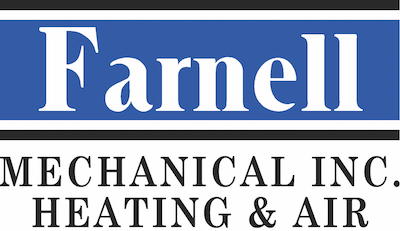
Ceiling fans are one of the most overlooked ways to make your home more comfortable and reduce energy costs. By improving air circulation and supporting your HVAC system, ceiling fans and energy efficiency are truly a natural pairing. They offer a smart, cost-saving way to keep cool while reducing strain on your AC—helping you avoid unnecessary air conditioning repair.
In this blog, the experts at Farnell Mechanical, Inc. break down how ceiling fans can make your home feel more comfortable while saving you money thanks to increased HVAC efficiency. We'll also share some HVAC efficiency tips that put to good use ceiling fans.
Comfort vs. Temperature: Getting Comfortable with the Wind-Chill Effect Indoors
Ceiling fans don’t actually cool the air—they make your home more comfortable by increasing air movement across your skin. This is called the wind-chill effect, and it can make a room feel up to 4 degrees cooler without touching the thermostat. That means you feel less hot and enjoy the benefits of indoor air circulation from your ceiling fan while minimizing air conditioner use—helping reduce your electric bill in summer.
The Best of Both: Benefits of Using Fans and Air Conditioning Together
There are several benefits to using ceiling fans and air conditioning together, especially when it's very hot outside. By pairing both, you maximize HVAC efficiency and maintain a comfortable indoor temperature with less strain from your cooling system.
Benefits of using ceiling fans and AC together:
- Ceiling fans help lower HVAC load by moving cool air more evenly throughout rooms in your home. Decreasing HVAC stress is important, because it can prevent a breakdown that may lead to premature AC or furnace installation.
- Using ceiling fans enhances comfort by getting rid of warm pockets and improving air movement.
- Pairing ceiling fans and AC can reduce overall energy use. If you have a home automation system, you can even modify your smart thermostat settings to bump up the temp a few degrees while your ceiling fan is running.
Clockwise vs. Counterclockwise Ceiling Fan Rotation: What Direction to Spin in Summer and Winter?
To get the most out of your ceiling fans year-round, it’s important to set the blades to rotate in the right direction for the season. The direction impacts how air circulates, which can either cool you down or gently recirculate warm air so you feel warmer.
When to spin ceiling fans counterclockwise
In the summer, ceiling fans should turn counterclockwise at a quick speed. This creates a breeze that moves air toward the floor, enhancing the wind-chill effect and causing you to feel cooler.
When to rotate ceiling fans clockwise
In the winter, set your fan to rotate clockwise on a slower speed. This lifts cooler air and circulates heated air down to where you can feel it, making the space feel cozier without changing your thermostat.
Things to Look for in a Ceiling Fan
Selecting the best ceiling fan depends on a few key factors, including blade design, airflow rating and room dimensions. First, look for fans that have a good blend of ECFM airflow and blade pitch to deliver efficient air circulation in your home:
- ECFM refers to how much air a fan pushes—the cubic feet per minute, or CFM—per watt of electricity it uses. Fans with greater ECFM are more energy efficient.
- Blade pitch is the tilt of the blades. A sharper blade pitch moves more air than a shallower pitch but can also strain the motor.
Also, consider room size when sizing a ceiling fan—a fan that’s too small won’t move as much air as you'd like, while one that’s too big may be too strong for the space.
Raise Your HVAC Efficiency With the Team from Farnell Mechanical, Inc.
At Farnell Mechanical, Inc., our HVAC experts can help you enjoy year-round comfort while minimizing wear on your heating and cooling systems. From efficient ceiling fan strategies and air conditioning installation to smart thermostats and furnace repair, we offer comprehensive solutions that work with your budget. Reserve your appointment by calling 334-524-2458 today.
